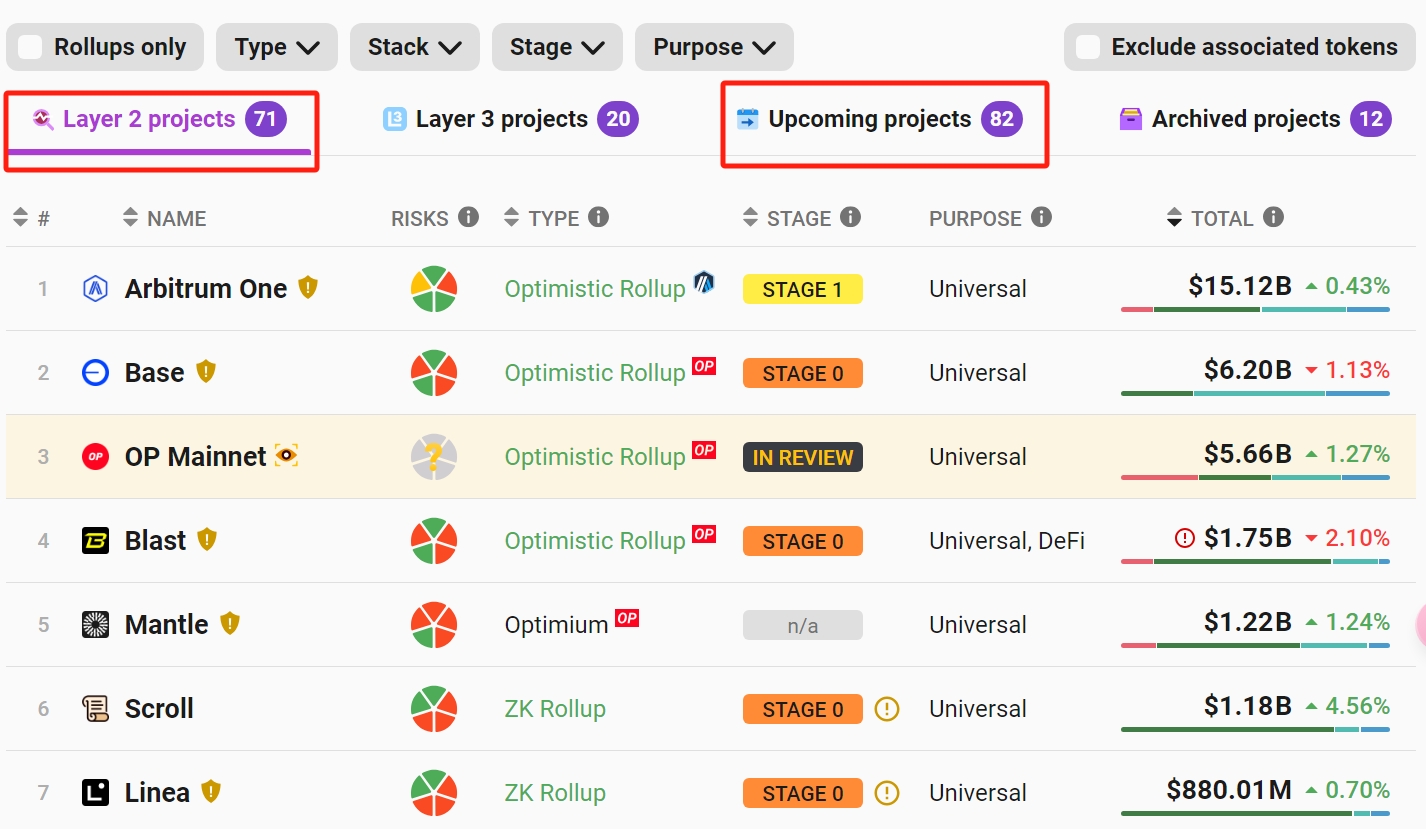In the last round of cycles, we witnessed various innovations: ICO, DeFi, Layer-2 and NFT..., but this round of the market is lackluster. Most new projects are mostly for meme coins and increasingly repetitive infrastructure public chains. .
According to Blockworks reports and L2Beat statistics, 71 Layer-2s are currently online, and 82 more are about to be launched. And this does not include Layer-3, there will be 20. Why are there so many?
The most obvious explanation is that launching a Layer-2 is profitable.

New Chain hopes to copy L2’s successful experience
Currently, these new Layer2 projects like to use the largest L2 as a reference to define their potential value. They generally believe that since the largest L2s have amassed multi-billion dollar valuations, emerging projects should be able to capture at least a sizeable portion of that valuation as well.
Of the current top 30 cryptocurrencies by market capitalization, 18 are Layer 1 or Layer 2. And with the emergence of "Rollup as a Service" (RaaS) providers such as Conduit and Caldera, launching a Rollup chain has become easier than ever. This has led to the emergence of many almost identical Rollup chains on the market, intensifying the competition for resources.
Conduit founder Andrew Huang admitted:
There are some copy-and-paste Layer-2s that lack differentiation, and these Layer-2s create user fatigue between different rollups.
Hate Rollup
And the market seems to be beginning to express its distaste for this surge in rollups. For example, the popular Blast L2 launched its token at a fully diluted valuation of US$2.7 billion, which is far lower than the market’s previous expectations, and this valuation currently continues If it falls sharply, it will soon fall below the $1 billion mark.
In fact, there is more to this phenomenon than excessive marketing.
Cost minimization is also an important driver for most on-chain application developers. As dApps become popular, the fees they pay to Layer-1 / Layer-2 become too expensive, which prompts dApp developers to choose to launch their own application rollup chains to capture these revenues, which is also a completely reasonable Business decisions.
Infrastructure is still needed
In response to this phenomenon, Caldera CEO Matt Katz said:
Ethereum's rollup-centric vision is exacerbating this situation, "there may be thousands of rollups in the future."
These rollups are siled and have difficulty communicating with each other... A more efficient way is needed, applications and infrastructure have to work together, and it is a mistake to think of it as a zero-sum game.
In other words, one of the important infrastructures currently lacking is a protocol that can strengthen interaction in various fields. Wei Dai, a research partner of 1kx, believes:
As better interoperability infrastructure develops, there will be less need to rely on external facilitators for high-risk cross-chain transfers.
The shared sequencer can guarantee atomic swap transactions between rollup chains, which is a major improvement to the user experience.
But often the value of infrastructure development is not immediately apparent, and many of today's cherished consumer innovations are mostly the product of incremental infrastructure improvements, often achieved incrementally over decades of hard work. When will the market get rid of this lack of innovation and everyone fighting in the Red Sea? It deserves our attention.







